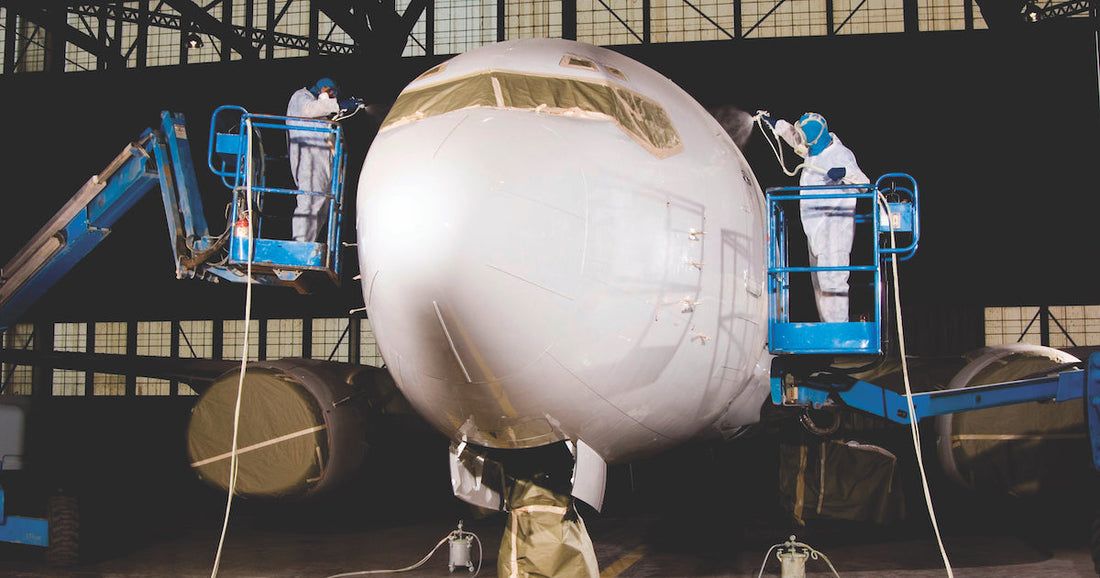
Overcoming Challenges in High-Speed Aircraft Paint Inspection?
Share
The world of **aircraft paint inspection** is a realm where innovation meets precision. With the rise of new technologies, the process of overcoming challenges in high-speed aircraft paint inspection has become a topic of significant importance among tech professionals and enthusiasts.
Aircraft paint is not just about aesthetics; it plays a crucial role in maintaining structural integrity, resisting corrosion, and ensuring **aerodynamic efficiency**. As aircraft manufacturers ramp up their production rates and seek to expedite turnaround times, the need for efficient and effective inspection methods becomes urgent. In this article, we will explore the common challenges faced in this process and innovative solutions to tackle them.

The Importance of Paint Inspection in Aviation
Paint inspection is necessary to meet both regulatory and safety standards. Without regular inspections, issues such as **paint defects**, fading, and degradation can occur, which may compromise the aircrafts performance. Aesthetic appeal aside, the failure to properly inspect and maintain aircraft paint can lead to catastrophic failures.
Customized Solutions for High-Speed Inspection
The quest for speed in **aircraft manufacture** has led to numerous advancements in paint technologies and inspections. We can categorize some of the common challenges faced in **high-speed aircraft paint inspection**.
- Material Compatibility: Different **coatings** require varied inspection techniques based on their chemical compositions.
- Surface Variability: Airframes comprise numerous materials, including composites and metals, making inspection more complex.
- Environmental Factors: Temperature and humidity can dramatically affect the curing process of paint.
Utilizing Technology to Overcome Paint Inspection Challenges
In recent years, technology has emerged as a powerful ally for aircraft manufacturers. Innovations in scanning and imaging technologies can help address the **challenges in paint inspection**. Here are a few notable techniques:
1. Automated Visual Inspection Systems
Automated systems equipped with **machine learning algorithms** can learn from previously identified defects and adapt their detection processes accordingly. These systems significantly decrease inspection time while increasing accuracy.
2. 3D Scanning Technology
This method involves employing laser scanning to create a 3D model of the aircraft. It allows inspectors to assess the paint finish with incredible precision. For more on laser scanning in aircraft manufacturing, visit Simple Flying.
3. Infrared Spectroscopy
This technology can detect variations in paint thickness and composition, enabling inspectors to identify defects that could lead to larger issues in the future.
Best Practices for High-Speed Aircraft Paint Inspection
To ensure optimal outcomes during inspections, integrating best practices is essential. **Training staff** on new technologies, using standardized processes, and regularly revising inspection criteria can vastly improve the overall quality of inspections.
1. Continuous Education and Training
As technology evolves, so must the skills of the workforce. Continuous education ensures that the inspection teams are up-to-date with the latest technologies and methodologies.
2. Standardizing Inspection Protocols
Documenting inspection procedures and ensuring uniform application across all types of inspections enables organizations to maintain consistency in their quality standards.
3. Collaborating with Expert Vendors
Engaging with vendors and organizations specializing in **aircraft paint technologies** can facilitate access to cutting-edge tools and best practices. For example, the 3M Aircraft Painting page provides valuable resources on how to efficiently manage aircraft paint inspections.
Benefits of High-Speed Paint Inspection
The transition to high-speed inspection approaches can yield several benefits for manufacturers and airlines alike:
- Cost Efficiency: Reduced inspection time translates directly to cost savings.
- Increased Reliability: Advanced technologies render inspections more reliable, ensuring safety and performance.
- Enhanced Reputation: High-quality inspections result in better overall aircraft performance and customer satisfaction.
Case Studies
1. A Leading Aircraft Manufacturer
One of the largest manufacturers in the world adopted an automated inspection system and saw a **30% reduction** in inspection time.
2. A Regional Airline
A regional airline implemented infrared spectroscopy and substantially decreased their **maintenance downtime**, resulting in increased aircraft availability.
Future Trends in Aircraft Paint Inspection
The future of aircraft paint inspection looks promising as technology continues to advance. Trends expected to influence this sector include:
- Artificial Intelligence: AI will play a crucial role in predictive maintenance and defect detection.
- Robotic Inspection: Expect increased use of mobile robots to perform real-time inspections.

Frequently Asked Questions
1. What are the most common defects found in aircraft paint?
Common defects include bubbles, peeling, and uneven thickness, which can affect both the appearance and performance of the aircraft.
2. How often should aircraft paint inspections be performed?
Frequency depends on several factors, including environmental conditions and the operational profile of the aircraft, but regular inspections are recommended at least every six months.
3. Can high-speed inspections still maintain quality standards?
Yes, with the right technologies and practices in place, high-speed inspections can maintain or even improve quality standards compared to traditional methods.
In conclusion, the landscape of **high-speed aircraft paint inspection** is evolving rapidly. By recognizing challenges and embracing innovative technologies, the aviation industry can significantly improve efficiency, reliability, and safety.
